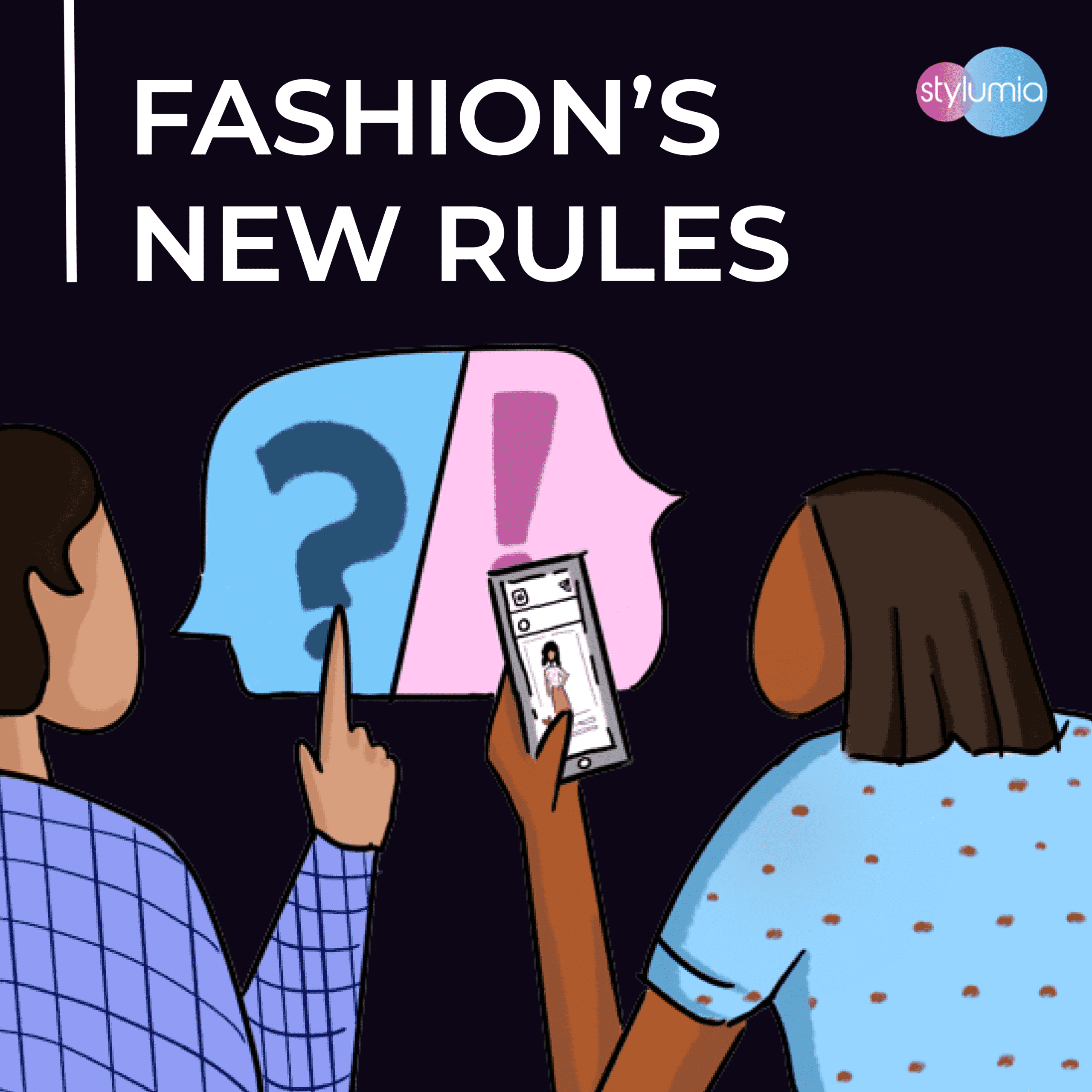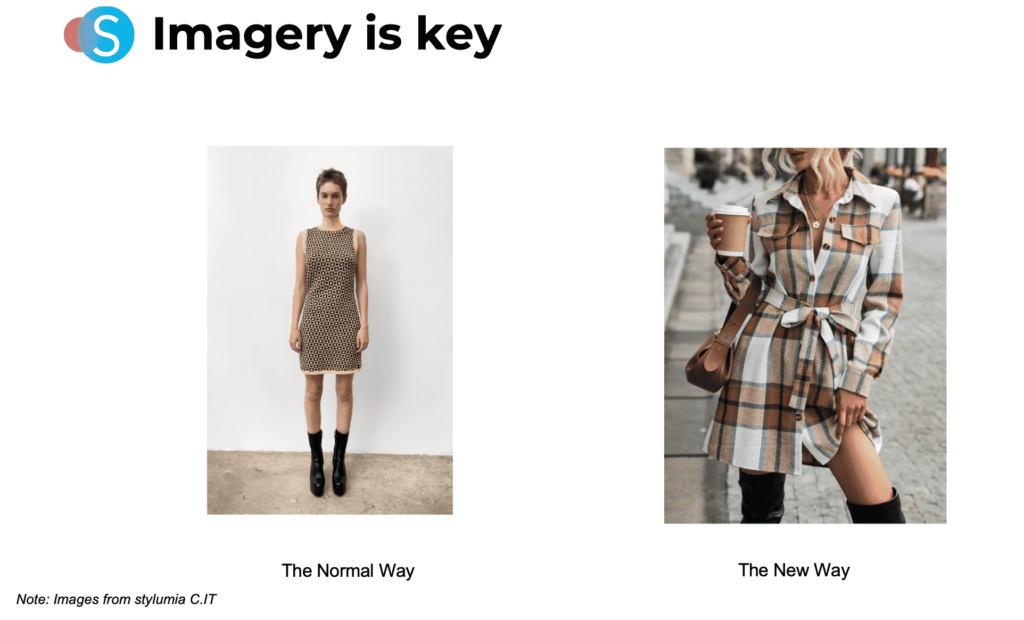Fashion’s New Rules

Fashion’s new rules are in play. The old ways won’t work effectively with the new rules.
Who decides how we dress, what we wear and also identify ourselves through clothing?
Do we decide this ourselves? or the people around us both physically and digitally? Those who pass by in the street, our followers in Instagram or those ahead of us in the shopping aisles?
The way the fashion game is played starts with what influences us. The evolution of the internet and social have changed fashion’s rules.
This change has an impact on how we consume, produce and sell.
We All Want To Fit In
Quoting Joanna Cannon from Psychology Today,
“How much time should your kids spend online?
Ten cool things you should be watching on Netflix
Clothes you shouldn’t wear after fifty
These are real headlines, telling us what we should be reading, watching, wearing and thinking. Magazines and newspapers are filled with shoulds and should nots, musts and must nots. But we don’t read these articles to find out how much time our children should be spending on the internet, or even what we should be wearing in any given situation. We read them to make sure we’re doing the same as everyone else. We read them to make sure we fit in.
On the playground, we first begin to notice the differences between ourselves and other children, and we start to mirror the behavior of a dominant group in order to be accepted by them. This mimicry continues into adulthood, and we often unintentionally alter our speech patterns, our expressions and even the tone of our voice, depending on who we’re talking to. Familiarity is the social glue that bonds people together, and we deliberately seek out the similar and the recognizable in order to feel secure. If we’re doing the same as everyone else, we must be doing it right, and finding a reflection of ourselves in those around us is a form of validation.
The need for acceptance is a basic human instinct – although some value it more than others.”
Why and What We Buy
This is one of Fashion’s new rules.
The majority of us no longer buy clothing for our personal needs but the admiration of those around us, who observe or follow us.
In his book “The ten equations that rule the world“, David Sumpter dedicates a rule to the Influencer equation. For those interested to know how the trillion-dollar industry by Google, Facebook and Instagram revolve around this equation, the book is a beautiful read. It is not us as much as the others in our network who influence us through every feed and post. We get a glimpse into others’ lives which play a role in our thinking. The larger the following a person, the more influential the person is. Google was the first one to adopt this through their page rank algorithm, which places the highly significant sites on the top. These platforms use a connectivity matrix to show relevant recommendations for us. This is a cyclical loop like the rich gets richer.
This reflects on the photographers to Runways these days, capturing the audience pictures as much as the models.
New PlayBook: Brands and retailers need to watch out for consumer demand trends as a lens to validate what they are making to avoid the pitfalls of becoming irrelevant. You can read here how traditional supply based systems can mislead us on real consumer trends.
Be Accessible
It is a world of being seen, liked and being validated.
Everyone is gunning for consumers’ attention. It is about the ability to stand out above the noise. Consumers have the world in their pockets. It is about being where they are, mobile, social, physical, digital stores. You must be easy to find and not just accessible.
While consumers have the world in their pocket, brands and designers also have global market access.
New Playbook: Global market access provides an opportunity to understand consumer trends digitally. Deep research is critical to winning in this dynamic market.
Be Innovative & Adaptive
All transformations happened through asking questions. With all the changes happening influenced by technology, worth asking questions that would put your brand ahead of the pack and in front of the consumer. Covid accelerated the need of being adaptive. It is a lesson we can carry forward as the new normal.
New Playbook: Mass personalization is one such innovation. This is designing, producing and delivering for one consumer. Innovation can be across the spectrum of product, impact and relevance. Technology is a key enabler here. Brands and designers need to stay ahead of the race. If you are happy to go with the flow, you may be left behind. There are other innovations like metaverse; we covered it in our earlier edit. Being adaptive and nimble is a must-have now. One of the largest D2C fashion brands in the world has even changed the way they present products to their consumer. This brand gives so much attention to their photography to an extent that only one in 100 photographers interviewed is selected. Given below are two images are taken from the Stylumia platform. One of them reflects the way consumers see product images on Instagram, the other one is a standard e-commerce one.

Be Conscious Of Impact
The consumers with the world in their pocket are also getting conscious of their decisions and their impact on the planet.
New Playbook: While there is a hustle in getting what consumers want, brands and designers need to be responsible for the planet in bringing their proposition.
Be Culturally Relevant Not Just Fashion
The internet has given a level playing field for consumers to bring up issues that were not in the past. Brands and designers need to be inclusive and diverse in their offerings.
New Playbook: For, e.g. admire all sizes and shapes and bring a selection. Also, dynamically understand the needs of the different segments of consumers. Complete personalization could eventually solve this at scale.
In Conclusion,
These fashion’s new rules have technology as their driving force. While technology has been an enabler, the real driver is people, the consumers who are inspiring the fashion industry.
In order to thrive and win in this consumer-centric world, brands, designers and retailers need to adapt quickly to consumer-demand trends as that is causing all the value delivery through the chain.
This would enable not only relevance, differentiation, unfair advantage but also a sustainable business in the long term.
Please do reach out for a free demo here on how you can empower your brand, yourself with dynamic consumer-demand intelligence across the world and be ready for fashion’s new rules.



